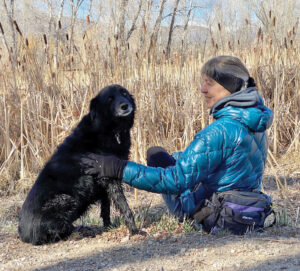By Peter Anderson
In the dream, I was teaching a class with Wallace Stegner, once known as “the dean of Western writers,” and it wasn’t going well. Standing up in front of the students, I was thumbing through an anthology, trying to locate a poem I wanted to share with them, but the font was too small and I had misplaced my glasses. Stegner was patient and dignified as one might expect from such a grandfatherly figure, but he did clear his throat once or twice while I struggled to decipher the hieroglyphics that were swimming across the page.
Fortunately, the dream did not last long. It was triggered, I’m pretty sure, by A.O. Scott’s thoughtful essay about Wallace Stegner, which I had just read in the New York Times. Stegner’s literary career was about as stellar as they come. He wrote a dozen novels (winning a Pulitzer and a National Book Award along the way) and just as many books of nonfiction. He established the creative writing fellowship program at Stanford where his students included Wendell Berry, Larry McMurtry, Thomas McGuane, Raymond Carver, Ken Kesey and Edward Abbey to name a few.
Scott’s essay reminded me how important Stegner’s writings were for me a few decades ago. Many of his books—including “Angle of Repose,” “Big Rock Candy Mountain,” “Crossing to Safety,” “Where the Bluebird Sings to the Lemonade Springs,” and “The West as Living Space”—still live on my book shelf. “Angle of Repose,” a novel based on the life of author and illustrator Mary Hallock Foote, which portrays her life in nineteenth century mining communities including Leadville, tops my list of great novels set in the American West. His essays on the history and geography of the West, as panoramic and all-encompassing as the landscape itself, helped me to understand the stories that we have told and continue to tell about this region. His belief in the power and sanctity of wilderness and his advocacy on its behalf as a writer and a citizen, reinforced my own inclinations.
But the part of Stegner’s world view that made the biggest impression on me was his insistence on the value of being a “placed” person. Stegner admired his former student, the great Kentucky poet and farmer Wendell Berry, not only for his literary accomplishments, but also for his devotion to a home place. “If you don’t know where you are,” Berry once wrote, “you don’t know who you are.” The “where” in question is not determined by glancing at a street sign or a road atlas. It is understood by way of the senses, the memory, and one’s own history. Knowledge of a place, as Stegner understood it, comes from “working in all its weathers” and “loving its mornings or evenings or hot noons.” This kind of knowing, Stegner said, requires “human attention that at its highest reach we call poetry.” In other words, a “placed” person knows the “where” of their existence because they notice the details that make that place unique. This kind of noticing takes time and it takes a tendered and patient disposition, which is why a settled life in one location does not necessarily result in a placed person.
Wallace Stegner’s father was the opposite of a placed person. As Stegner points out in several books including “The Big Rock Candy Mountain,” a novel based on his family’s story, his father was as restless “as a tumbleweed in a windstorm,” always looking for the next opportunity down the road, rarely staying anywhere long enough to develop meaningful community relations. Stegner regarded this kind of rootlessness as “hasty, shallow, and restless….” A displaced person, he wrote, “has a current like the Platte, a mile wide and an inch deep. As a species, he is nonterritorial, he lacks a stamping ground. Acquainted with many places, he is rooted in none. Culturally, he is a discarder or transplanter, not a builder or conserver.”
Stegner encouraged Westerners to settle in and learn their places, a long process that might be likened, in terms of the attention it requires, to a devoted relationship or marriage. Only the “stickers”—those who learn to live in a given place—can foster a sustainable Western culture, he argued, not the “boosters”—those who want to “get in, get rich, and get out.” Historically, the “boosters” have had their way with the West, but Stegner believed that within a generation or two, we would “work out some sort of compromise between what must be done to earn a living and what must be done to restore health to the earth, air, and water.” It’s been at least a generation or two since he wrote that and the jury is still out. Were he alive, I wonder if he would be as optimistic.
Either way, I’m pretty sure he would still be a devoted student of the West, because the rootlessness that Stegner experienced growing up in his father’s shadow left him forever yearning for a deeper connection: “Neither place nor I had a chance of being anything unless we could live together for a while. I spent my youth envying people who had lived their lives in the houses they were born in, and had attics full of proof that they had lived.” Stegner never had that, but he did have a strong relationship with the region as a whole, having grown up in Saskatchewan, Montana, Salt Lake City and Reno among other Western places. He devoted his life to studying and understanding the West, and in so doing, was both attuned and devoted to his home ground or territory.
Growing up, he logged plenty of miles on the dusty back roads of the American West. But even after he settled into a long and distinguished academic career in California, he continued to explore the intermountain West, the region where he felt most at home, in his literary life and in his travels. Along the way, he became a person who “loves the life they have made and the place they have made it in.” He became a placed person. That map still looks good to me.
Peter Anderson recently retired from teaching in order to become a full-time word wrangler. He lives in Crestone.


